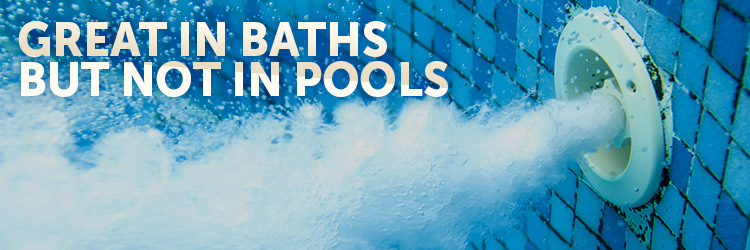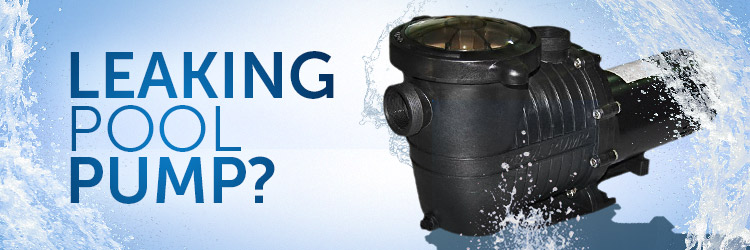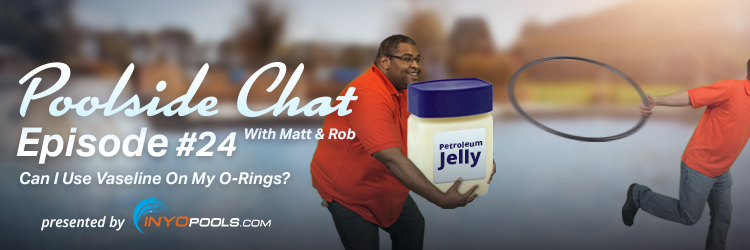Panic! at the Pool
Your pool is leaking more water than a screen door on a submarine but you have not the foggiest idea where it is going. Your first suspect evaporation rate, the next idea is a leaky pump and the third is a cracked pipe. No matter the cause, the thing front of mind is how light will this make your wallet. If you own a pool long enough, this situation will likely pop up. And as worrisome as a few hundred gallons of wandering water may be, there are simpler solutions than a costly plumber visit. This is why we bring to you Marlig’s Fix-A-Leak, a one stop shop of pipe plugging power. This blended concentrate of crack sealant, seeks out the faults in your system and stops them cold in their tracks.
How Do I Test for a Leak?
The acceptable sun evaporation rate for a pool averages ¼ inch per day. At that rate, the water level should drop about an inch and a half in a week. Anything more than this loss and we would suspect a leak somewhere in a line. But we do not like guessing on things of this nature so we are going to do an experiment to track evaporation rates.
We will need three things to test our pool’s evaporation rate: a 5 gallon bucket, tape measure and time.
Chances are a pool owner was not measuring evaporation rates before the leak started so we need to find a way to measure the rate of loss. To nail down the evaporation rate, compare the pool’s water loss to a “control” body of water. This is where the bucket comes into play.
We are going to fill the bucket half way and place it next to the pool, preferably in a sunny spot. This will test for optimal rate of loss. Use a washable sharpie to mark the bucket and the waterline of the pool. Let the bucket sit without disturbance for a day. The next day we can compare the initial mark with its current water level. If the single day loss varies greater than a quarter of an inch then I would say you have a leak.

What Are You Going to Do about It?
Fix-A-leak is prescribed for cracks, gaps and holes ⅛ of an inch in diameter or smaller in your pool or spa. For big jobs like pools, we would introduce Fix-A-leak into the water and let it circulate for 4 – 6 hours per the manufacturer’s instructions. Because the powder is heavier than water it will settle to the bottom of the pool. Every hour or as needed, stir the bottom of the pool to suspend the powder in the water for proper circulation. The recommended dosage is 1 quart per 22,000 gallons but can be used in concentrations as high as 1 quart per every 5,000 gallons. For applying directly to a leak, use a squeeze bottle, similar to a ketchup bottle and follow label instructions. Spa application suggested dosage is one 8 ounce tube of Fix-A-Leak for every 1,000 gallons.
Well, What Doesn’t It Work On?
Marlig Fix-A-Leak is a little Dutch boy in a bottle plugging holes where he finds them, but as with most products, it does have some limitations. The product shortcomings are separated by application type; first we will start with pools.
I have been talking pools for a few years now and that means I have spoken with characters with all types of pool rigs. I’ve had the pleasure of speaking with homeowners constructing above ground pools from wood framing, re-purposed silos, and my favorite, a buried ship container. When someone says they have a leak, I make sure they tell me what material they are trying to patch before I start spouting suggestions. With that being said, Fix-A-Leak will not fix all the leaking ills that ail your pool. When dealing with a wood frame leak issue, it can seal a crack or a seam in a panel as it would any other surface. But if the source of the leak is from water seepage through porous wood fiber then you would be out of luck. Fix-A-Leak seals the seam but will not plug pores. The same can be said for other porous surfaces like rock, cement and brick.
Spa applications will shorten the lifespan of Fix-A-Leak due to higher stresses caused by the bubbling cauldron of high temperature, chemical concentration, and vibration. This trinity of trouble has an effect of loosening Fix-A-Leak’s grip on your pipe gap which makes a re-application necessary within 1 – 2 seasons.
Temper your expectations when using Fix-A-Leak in cooler climates as the temperature of your pool water will slow the chemical process of curing. This product is not as sensitive to temperature fluctuations as your mom’s souffle, but if you plan on using it in temps below 70 degrees Fahrenheit, be prepared to let the solution set a day or two longer. A premature start-up before the chemical can set and we will need to start the process all over again. No fun.
Just a reminder, Fix-A-Leak is not a permanent solution to a plumbing leak but a sturdy stop gap until you can permanently fix the cause. Its long lasting seal can help you limp into the offseason months when the necessary repairs can happen without interrupting your pool season. Some users have been applying this product to the same crack for years instead of committing to lengthy/expensive repairs. This is an option but the purpose of Fix-A-Leak is to fill the gap. It will not prevent the flaw from enlarging due to further stress. Play it by ear if you are cost conscious but we suggest having a professional repair at your earliest convenience.
As usual, if after reading our blog posts more questions arise or there is further explanation needed, do not hesitate to call our techs at 877-372-6038.












Tari, your test setup sounds perfectly reasonable to me. remember to pull the filter out of your filter and clean really well drain baskets before using the fix a leak, turn off main drain and heater feed for first pass leak fix. remember to let pool sit not running for 24 hours to allow fix a leak to cure and seal the leak. turn on main drain pump feed and then run through heater piping.
then after cure time reinstall filters in filter ect and run pool for 2 hours checking if leak is fixed.
my issue was air getting into skimmer line to pump keeping prime from
From last year, we have a very basic round 10’x30” pop up metal frame and plastic/vinyl pool from last year. When filling it seems the entire seam around (where walls meet floor) is slowly leaking. Clearly our cleaning/storing over canadian winter and they’re out of stock everywhere. The pump is fairly weak, do you think this will seal all the way around?
I know I have a leak and its an above ground 21 x 52. We have been round and round the pool. I think I know where its at but its like a needle in a haystack. This is a vinyl wall. Will Fix a Leak work for me.
Marlig Fix a Leak is safe to use on Vinyl Liners. It will only work for pinhole leaks on the bottom of the surface, it will not work for the sides of the pool. Please review the directions in full before using
I’m sure I have a leak somewhere in my returns. Due to leak in main drain pipes, I have that plugged. My plan is to run a hose from both returns to skimmer during the recirculation process. What do you think.